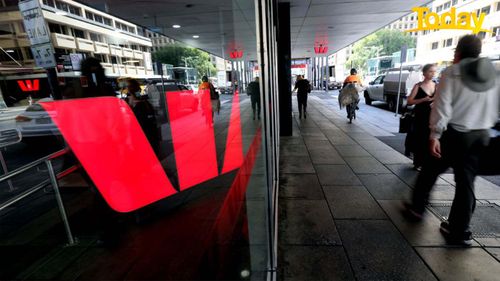The man on the other end of the line sounds professional, with a clipped British accent.
You can listen to the full audio of the call in the video player above.

It’s a tactic designed to quash any suspicions and immediately put his potential victim at ease.
The man then tells the woman there has been a transaction attempt using her credit card at the Palacio Herrero in Mexico.
“Are you currently in Mexico and trying to use your card at all?” the man asks.
“No, I’m not,” the woman answers.
The man responds by telling her he will need to cancel her card and send out a replacement, which will take three to five working days. He reads out the woman’s home address, which she confirms.
The scammer then tells the woman he has sent a cancellation code to her phone, which he asks her to read out.
The text in the actual message sent to the woman’s phone does not exactly match what the scammer is asking for.
The message reads “use this password to complete your online purchase”, however the prompt is enough to get her to read out the code.

Once the scammer has the code, he asks the woman to go through another security check.
He asks the woman for her date of birth, but at this point, she grows suspicious and says she is no longer comfortable providing him with any more details.
The scammer politely says he understands and asks her to call him back “even on the same number” he has called on.
“I’ll call you, I’ll make a few enquiries with my personal banker too,” the woman replies before hanging up.
Westpac, who released the audio recording of the call, says it shows the increasingly sophisticated techniques scammers are using to defraud customers.
In this case, no money was lost to the scammer as Westpac detected the suspicious transaction before any funds were sent.
However, similar cases of fraud are on the rise with new Westpac data finding scams increased 33 per cent in July from the year prior. Impersonation scams are one of the most common scams currently targeting customers.
“We’ve seen a significant increase in cases where scammers are using software to mask their phone number with the number of a known business,” Westpac head of fraud, Ben Young, said.
“These scams are incredibly challenging to detect because from the customer’s perspective, they appear to be getting a call from say Westpac, when in fact, it’s a scammer posing as a member of our fraud team calling from a completely different number.
“The scammer will then use personal information they’ve fraudulently obtained, like quoting the customer’s name or last few digits of their credit card, to convince them the call is genuine,” Young said.
The average bank card skimming victim loses around $299, according to the research.
In a bid to combat these scams, Westpac recently teamed up with telco Optus to become the first private Australian business to block calls from scammers impersonating the bank.
More than 94,000 Westpac phone numbers have been added to a ‘Do Not Originate’ list, which will prevent scammers from impersonating Westpac numbers.
The list is also shared with other carriers to extend the protection across different networks.
Scammer red flags:
- Unsolicited contact. They unexpectedly call, SMS or email you claiming to be from a reputable business.
- They know personal information. They have often already fraudulently obtained personal details like your name, ending digits on your credit card or approximate location, which makes them appear legitimate.
- They want you to action something. They will often instruct you to complete an action while on the phone to them – like updating your banking details, increasing your daily payment limit, downloading an app or sending money to a ‘new’ account.
- They use spoofing software. They may use software to send you a fake SMS that appears to be from the business they say they’re calling you from while on the phone with you to convince you the call is genuine.









